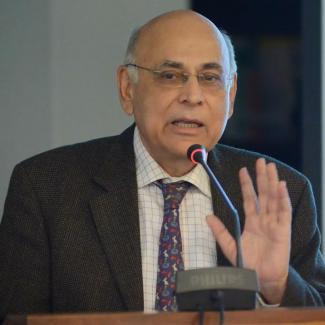Phase I – Research on garments industry in Pakistan
Study designed to address why garments had performed below potential in Pakistan.
The textile industry plays a pivotal role in Pakistan's economy accounting for 8.5% of GDP, 46% of the industrial output, 54% of the total export earnings and 38% of the country’s workforce. Within textiles, a ready-made garment is the largest employment-creating manufacturing activity employing around 2 million workers directly. Garments also generate the highest value addition in the textile sector. A bale of exported raw cotton fetches USD 238, while garments made from the same bale and exported earns USD 1,600. A striking stylized fact, repeated by Pakistan’s textiles gurus, is that 50,000 Kg’s of cotton fibre generates 400 jobs in each of the upstream activities in Pakistan’s textiles chain i.e., spinning to manufacture yarn, manufacture of grey cloth and manufacture of finished fabric.
Despite the economy-wide benefits of the garments industry, the sector has not lived up to its potential. Total exports have hovered at under US$ 13 billion in 2011 and productivity is only 37% of the benchmark set up by China. It remains below the productivity levels achieved by Bangladesh, India, Turkey, and Vietnam that are outcompeting Pakistan’s garments. The proposed Pakistan garments sector study is designed to address the core question of why garments have performed below potential in Pakistan. Specifically, what are the productivity retarding features that lie in the domain of policy (at both federal and provincial government level) that can enhance the productivity of garments manufacturing firms, strengthen their competitiveness in the international market and allow them to contribute to the economy-wide benefits of higher growth, greater job creation and improved intra-family welfare.
This study responds to a request made to IGC Pakistan Country Director by the Government of Pakistan. Given that garments are the most labour intensive, least energy and capital intensive and generate the greatest value addition of all the products in the textiles value chain as compared with yarn, grey cloth, finished fabrics and garments, the research looks at the following:
- What is the overall structure of the Garments sector and why has the garments sector not performed well?
- What are key systematic shocks that have led to the decline in the performance of the sector?
- What are the structural parameters of the garments industry in Pakistan and how do they vary from more successful garments sectors such as that of Turkey and Bangladesh?
- What are the actual firm specific constraints and what are the policy level constraints that have hampered the performance? The answers to this question will be critical in understanding the source of poor industrial outcomes and weak firm capability that has resulted in poor industrial outcomes in terms of international competitiveness and job creation in the garments sector.









